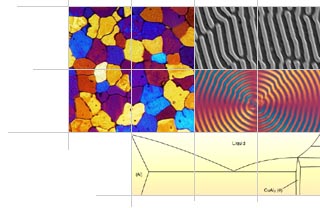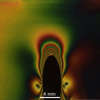Micrograph Library
Browse the libraryAdvanced searchSystemsCompositionsTechniquesKeywordsPhase diagramsHelpPreferencesAbout the micrograph libraryTerms of useContribute micrographs!FeedbackLinksCredits Print this page

Full Record for Micrograph 599

[59 KB]
View micrograph
.. in new window
View micrograph and record
.. in new window
You can also view and download the micrographs on Flickr
- Micrograph no
- 599
- Brief description
- Frozen stress photoelastic assessment of load distribution around an ellipsoid
- Keywords
- Araldite, birefringence
 , composite material
, composite material  , Eshelby, load distribution, photoelasticity
, Eshelby, load distribution, photoelasticity  , polymer
, polymer  , polymer composite, reinforcement
, polymer composite, reinforcement  , residual stress
, residual stress  , shear
, shear 
- Categories
- Composite, Polymer, Polymer composite
- System
- Araldite (TM)
- Composition
- Araldite CT200/HT907 'matrix' with ellipsoid CT200/HT901 'particle'
- Standard codes
- Reaction
- Araldite is a thermoset polymer, formed by the reaction of an epoxy resin with a hardener. In this case, the epoxy resin is CT200 and the hardeners are HT901 and HT909
- Processing
- A 'reinforcement particle' was cast, cured and machined into an ellipsoid, and the 'matrix' cast and cured around it. A load was applied at 135deg C and stresses 'frozen in' by slow cooling through Tg
- Applications
- Mechanical characteristics of the particle-matrix interface are of central importance for composite materials. The distribution of shear stress along the interface is critical to the load distribution and can be evaluated by this method.
- Sample preparation
- The model has been compressively loaded (0.16MPa) parallel to the particle axis
- Technique
- Cross-polarised light microscopy
- Length bar
- 6 mm
- Further information
- The experiment indicates a more uniform of shear stress than that predicted by the shear lag model, suggesting that the model underestimates the magnitude of fibre loading, especially at low fibre aspect ratios. Eshelby type models, on the other hand, successfully predict the average phase stresses, but not the form of stress varying within the fibres.
- Contributor
- Prof T W Clyne
- Organisation
- Department of Materials Science and Metallurgy, University of Cambridge
- Date
- 03/10/02
- Licence for re-use
 Attribution-NonCommercial-ShareAlike 4.0 International
Attribution-NonCommercial-ShareAlike 4.0 International- Related micrographs

